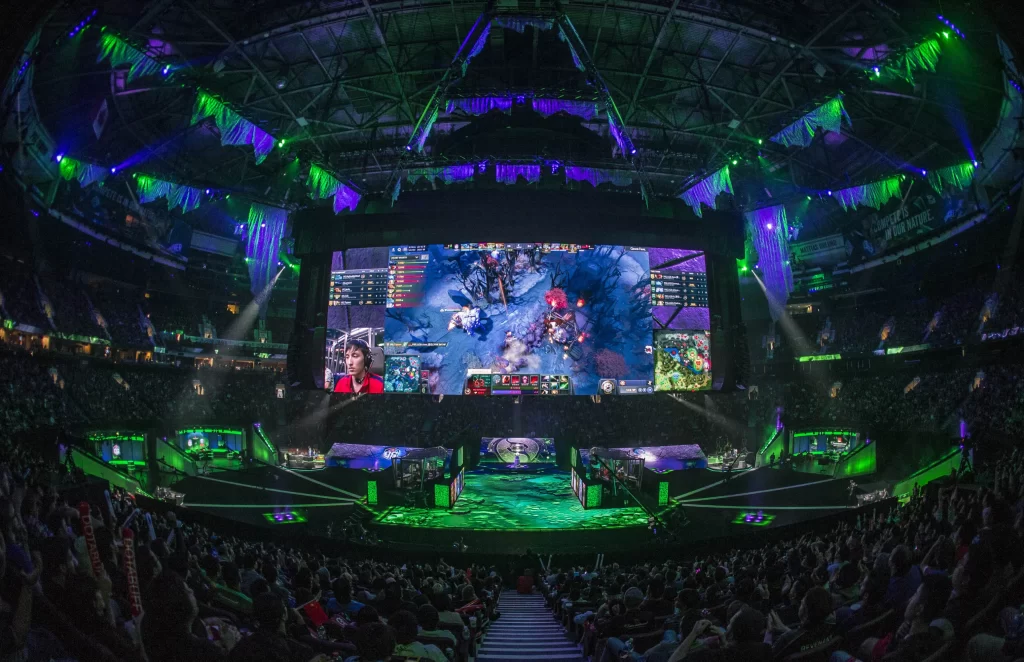Can esports become mainstream?
April 13, 2023
In this article EngageRM’s Brayden Scott is looking into whether or not esports can ever move from a niche community to mainstream.
30 years ago, if someone had said that playing video games at a professional level would merit global fame, big name sponsorship and millions in funding, they would have been laughed at.
Right now, in 2023, esports is the biggest it has ever been and growing rapidly, with the opportunity to rival some of the growth we are seeing in more mainstream sports. However, like any emerging industry, it has its challenges.
A Quick Overview
Esports stretches over thousands of games across countless formats. When it comes to online team sports, large continental tournaments will be held for games. Just as a season for the NFL has teams play one another for points, the same goes with most team esports.
Esports is generally viewed on streaming platforms YouTube and Twitch, however, for world tournaments, grand finals, and other major deciding games, it will often see a packed-out arena with fans able to watch their favourite gamers in person.
The $$$
So, what seat at the table does esports have in the wider sporting landscape?
Well if you had of asked ESPN’s former president John Skipper a few years ago, he wasn’t sold.
“It’s not a sport – it’s a competition”, said Skipper back in 2015. Yet ESPN acquired broadcasting rights for multiple esports only a few years after that statement.
Gaming’s valuation is US$365.60bn in 2023. For context, the entire sports industry in 2023 sits at US$512.14bn in 2023. Esports has seen a substantial increase in spending and viewership in the past few years, especially booming over COVID when everyone’s participation in competitive sport was limited to their couches and bedrooms.
A handful of professional sports clubs have signed esports deals, creating a digital team for their given sport. Billions of dollars later, has esports established itself as much as some had hoped?
Why the growth has slowed
Despite all the influx of cash, it hasn’t been smooth sailing for esports. Esports has seen a huge number of layoffs recently. Major esports teams like 100 Thieves, Team Liquid, Immortals, OpTic and numerous others saw several staff cuts, much like every other industry in the current economic climate. The most notable being “The Guard” who released ALL their employees. Many have come to the realisation that the profitability of an esports organisation does not make financial sense currently, needing to spend more on talent than any prize pool, merchandising or brand deals could ever bring in.
Despite the growth in gaming and esports, the revenue streams for these companies are not growing alongside. As these teams are usually owned by larger corporations, the first areas they cut from their business is sponsorship spend for these teams.
A recent win however has been the announcement of the first ever Olympics esports in 2024 in Singapore, gaining a larger audience and mainstream coverage of the event. And while that might attract new fans, the question remains: will this culturally connect with its existing fans and its communities?
Cementing itself
What is missing from the teams and organisations is a feeling of culture. Traditional sports teams have the added bonuses of long-standing history’s and some of the most marketable and recognisable athletes in the world.
But esports has a lot of work to do on their brand and cultural identity. Without a unified governing body, it is a bit of a free-for-all, managed by a variety of companies and game owners. That ground up approach does create a bit of brand chaos, though there are certainly some huge benefits.
Esports has seen huge gains from forming communities with players and influencers associated within the sport. With watch-along and players sharing their personalities, they can create a closer relationship with their fans.
For more insights like this sign up to EngageRM’s newsletter The Crowd here
Esports is also borderless, with communities stretching across the globe for any game and team. It’s low cost for viewers having free to view for all audiences, which has enabled it to grow a fanbase considerably faster. Not to mention a low barrier of entry into the sport, allowing anyone to play the game whenever they want from anywhere in the world.
Esports having a largely online following allows for the most interactive viewing experience of any sport. The ability to be able to spectate the games however the viewer pleases, gives esports a benefit it hasn’t yet fully tapped into.
Instead of being limited to a single camera, decided by a broadcaster, you can watch every centimetre, every angle, all at once. Allowing viewers to interact and create their own viewing experience is a new level of engagement that isn’t possible in other sports.
Finally, it must focus on understanding its fans. Currently an esports fanbase is not attached to a club like a group of Man Utd season ticket holders at Old Trafford.
Esports fans’ sense of belonging and connection comes from the game itself and watching the best players battle it out – not necessarily from the outcome of the teams that are participating. Esports audiences largely consist of teenagers and young adults, which mainstream sports are desperate to attain that demographic of fans, differentiating esports with mainstream sports.
At the heart of it, esports is a young industry. In a world where technology and digital connection is continuing to move at breakneck speed, it is well positioned to ride a wave that could push it into the mainstream.



